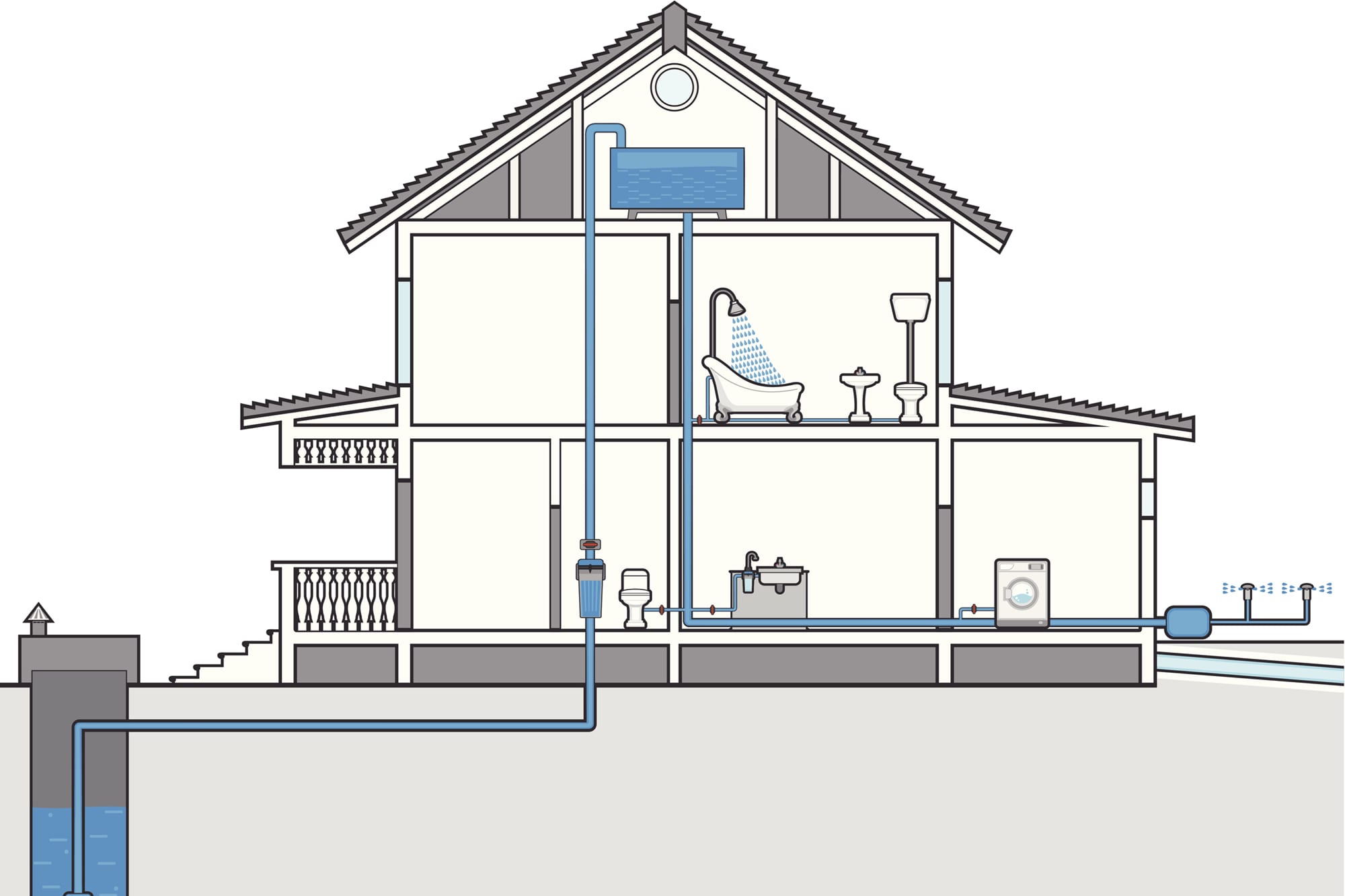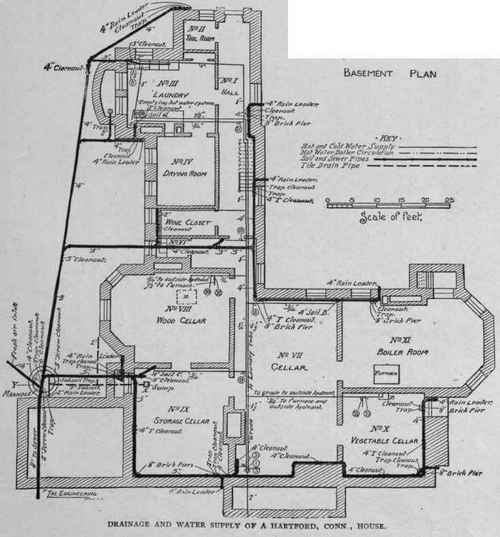Exploring Your House's Plumbing System Anatomy
Exploring Your House's Plumbing System Anatomy
Blog Article
Right here on the next paragraphs yow will discover a bunch of helpful material involving The Inner Workings of Your Home's Plumbing.

Comprehending how your home's pipes system functions is important for every single house owner. From supplying clean water for alcohol consumption, food preparation, and bathing to safely getting rid of wastewater, a well-kept pipes system is essential for your family members's health and convenience. In this extensive overview, we'll check out the complex network that comprises your home's plumbing and offer suggestions on upkeep, upgrades, and handling common issues.
Intro
Your home's pipes system is greater than just a network of pipelines; it's an intricate system that ensures you have accessibility to clean water and effective wastewater removal. Knowing its components and exactly how they work together can assist you stop pricey fixings and make certain every little thing runs efficiently.
Basic Parts of a Plumbing System
Pipelines and Tubes
At the heart of your plumbing system are the pipes and tubes that bring water throughout your home. These can be made from numerous products such as copper, PVC, or PEX, each with its benefits in terms of toughness and cost-effectiveness.
Components: Sinks, Toilets, Showers, and so on.
Fixtures like sinks, bathrooms, showers, and bathtubs are where water is used in your home. Recognizing how these components link to the pipes system assists in detecting problems and intending upgrades.
Shutoffs and Shut-off Factors
Shutoffs control the flow of water in your pipes system. Shut-off shutoffs are important during emergency situations or when you require to make repair services, permitting you to isolate parts of the system without interfering with water flow to the whole residence.
Water Supply System
Key Water Line
The main water line attaches your home to the metropolitan water system or an exclusive well. It's where water enters your home and is dispersed to different fixtures.
Water Meter and Pressure Regulatory Authority
The water meter procedures your water use, while a stress regulatory authority makes certain that water streams at a risk-free stress throughout your home's plumbing system, preventing damages to pipelines and components.
Cold Water vs. Hot Water Lines
Understanding the distinction between cold water lines, which provide water straight from the main, and hot water lines, which carry heated water from the water heater, helps in fixing and planning for upgrades.
Drain System
Drain Pipes and Traps
Drain pipes bring wastewater away from sinks, showers, and toilets to the sewer or septic system. Catches avoid sewage system gases from entering your home and likewise trap debris that might create blockages.
Air flow Pipes
Air flow pipes permit air into the water drainage system, avoiding suction that could slow down drainage and trigger traps to vacant. Proper ventilation is necessary for maintaining the stability of your plumbing system.
Importance of Proper Drain
Guaranteeing appropriate water drainage prevents backups and water damages. Frequently cleaning drains and preserving traps can stop pricey repairs and expand the life of your pipes system.
Water Heating System
Kinds Of Water Heaters
Hot water heater can be tankless or standard tank-style. Tankless heating units warm water as needed, while storage tanks store heated water for immediate use.
How Water Heaters Link to the Plumbing System
Understanding exactly how hot water heater connect to both the cold water supply and hot water distribution lines assists in identifying problems like not enough hot water or leaks.
Upkeep Tips for Water Heaters
Regularly flushing your hot water heater to get rid of debris, checking the temperature settings, and checking for leakages can prolong its life expectancy and enhance power effectiveness.
Usual Pipes Issues
Leaks and Their Causes
Leaks can happen due to aging pipelines, loosened installations, or high water pressure. Resolving leaks quickly stops water damages and mold and mildew development.
Obstructions and Clogs
Obstructions in drains pipes and commodes are often triggered by flushing non-flushable items or a buildup of grease and hair. Using drainpipe displays and bearing in mind what goes down your drains can protect against blockages.
Indications of Pipes Problems to Watch For
Low water pressure, slow-moving drains, foul odors, or unusually high water bills are signs of potential plumbing problems that ought to be dealt with promptly.
Pipes Maintenance Tips
Normal Inspections and Checks
Set up yearly pipes evaluations to capture issues early. Seek indications of leakages, corrosion, or mineral build-up in taps and showerheads.
DIY Upkeep Tasks
Basic jobs like cleaning tap aerators, checking for toilet leaks utilizing color tablet computers, or insulating exposed pipes in cold climates can avoid significant pipes concerns.
When to Call a Professional Plumbing Professional
Know when a pipes problem requires professional proficiency. Attempting intricate repair services without correct understanding can cause even more damage and higher repair work prices.
Upgrading Your Plumbing System
Reasons for Upgrading
Updating to water-efficient fixtures or changing old pipelines can enhance water high quality, lower water expenses, and boost the value of your home.
Modern Plumbing Technologies and Their Advantages
Explore modern technologies like smart leakage detectors, water-saving commodes, and energy-efficient water heaters that can conserve cash and lower ecological impact.
Price Factors To Consider and ROI
Determine the in advance costs versus long-lasting savings when taking into consideration pipes upgrades. Numerous upgrades spend for themselves via minimized energy bills and fewer repairs.
Environmental Influence and Preservation
Water-Saving Fixtures and Devices
Setting up low-flow taps, showerheads, and bathrooms can significantly minimize water usage without sacrificing efficiency.
Tips for Minimizing Water Usage
Easy practices like fixing leaks quickly, taking much shorter showers, and running full loads of laundry and dishes can preserve water and reduced your energy costs.
Eco-Friendly Pipes Options
Take into consideration lasting pipes products like bamboo for floor covering, which is durable and environment-friendly, or recycled glass for kitchen counters.
Emergency Preparedness
Actions to Take Throughout a Pipes Emergency situation
Know where your shut-off shutoffs are located and how to turn off the water supply in case of a ruptured pipe or major leakage.
Importance of Having Emergency Contacts Handy
Keep call details for regional plumbers or emergency situation services readily offered for fast response during a plumbing dilemma.
Do It Yourself Emergency Fixes (When Suitable).
Temporary fixes like using duct tape to spot a leaking pipe or positioning a pail under a leaking faucet can decrease damage up until a specialist plumbing technician arrives.
Final thought.
Understanding the anatomy of your home's pipes system equips you to preserve it properly, saving money and time on repair services. By following normal upkeep regimens and staying educated about modern-day pipes innovations, you can guarantee your plumbing system operates effectively for several years to come.
HOW YOUR PLUMBING SYSTEM WORKS
Which Pipes Do What?
Blue lines = fresh water supply entering the building
Red lines = hot water supply entering the building
Grey lines = pipes carrying waste away from the building and venting pipes carrying gases away from the building (through the roof)
YOUR MAIN PLUMBING SYSTEMS
There are two main plumbing systems that support your home s basic plumbing needs one that brings clean water into your home, and one that sends dirty water away from your home. Connected to the toilet, bath, shower, and other faucets in your home, these two systems keep your water flowing in the right directions.
ACCESSING FRESH WATER
Fresh and clean water is brought into your home through the main water supply line . Filtered through one pipe, this water is pressured to flow into the various fixtures in your home at any given time.
This water can be sourced from a well located on your property, a pond or river (mostly cottages), or, as in most cases, from the city s municipal water treatment centre. However, it is important to note that water that is untreated, such as the water siphoned from ponds or rivers, may not be safe to drink. Personal water supplies always need to be treated for hardness and contaminants before consumed.
MUNICIPAL WATER SUPPLIES
Improve taste and odour
Remove sediment
Eliminate hardness
Reduce chlorine
COLD WATER SUPPLY VS. HOT WATER SUPPLY
Cold water flows into your home or building through the service line, which then distributes hot or cold water to your fixtures. This line is most commonly run through a central column that runs floor to floor. Hot water runs in short and straight pipes as the longer the pipeline, the more heat that will be lost in the transfer. Having shorter pipes also allows residents to access hot water more quickly.
WASTE WATER SYSTEM
Your wastewater system is divided into two parts pipes that send wastewater away from your home and venting pipes that send sewer gas away from your home. Sewage water travels through pipes that flush the water and waste towards local sewers that are operated and managed by your city or town. Most sewer systems rely on gravity to move the wastewater to where it needs to go.
The further away from your toilet or sink, the larger wastewater pipes become. This allows for waste to be disposed of from various parts of your home or business at once without pipe blockages. The angle and flow of these pipes are also essential for keeping your waste pipes clear of build up.
https://harrisplumbing.ca/how-your-home-plumbing-system-works/

HOW YOUR PLUMBING SYSTEM WORKS
Which Pipes Do What?
YOUR MAIN PLUMBING SYSTEMS
There are two main plumbing systems that support your home s basic plumbing needs one that brings clean water into your home, and one that sends dirty water away from your home. Connected to the toilet, bath, shower, and other faucets in your home, these two systems keep your water flowing in the right directions.
ACCESSING FRESH WATER
Fresh and clean water is brought into your home through the main water supply line . Filtered through one pipe, this water is pressured to flow into the various fixtures in your home at any given time.
This water can be sourced from a well located on your property, a pond or river (mostly cottages), or, as in most cases, from the city s municipal water treatment centre. However, it is important to note that water that is untreated, such as the water siphoned from ponds or rivers, may not be safe to drink. Personal water supplies always need to be treated for hardness and contaminants before consumed.
MUNICIPAL WATER SUPPLIES
COLD WATER SUPPLY VS. HOT WATER SUPPLY
Cold water flows into your home or building through the service line, which then distributes hot or cold water to your fixtures. This line is most commonly run through a central column that runs floor to floor. Hot water runs in short and straight pipes as the longer the pipeline, the more heat that will be lost in the transfer. Having shorter pipes also allows residents to access hot water more quickly.
WASTE WATER SYSTEM
Your wastewater system is divided into two parts pipes that send wastewater away from your home and venting pipes that send sewer gas away from your home. Sewage water travels through pipes that flush the water and waste towards local sewers that are operated and managed by your city or town. Most sewer systems rely on gravity to move the wastewater to where it needs to go.
The further away from your toilet or sink, the larger wastewater pipes become. This allows for waste to be disposed of from various parts of your home or business at once without pipe blockages. The angle and flow of these pipes are also essential for keeping your waste pipes clear of build up.
https://harrisplumbing.ca/how-your-home-plumbing-system-works/
I stumbled upon that blog post on Exploring Your Homes Plumbing Anatomy when surfing around the web. Remember to set aside a second to distribute this page if you enjoyed it. We treasure your readership.
Click Here Report this page